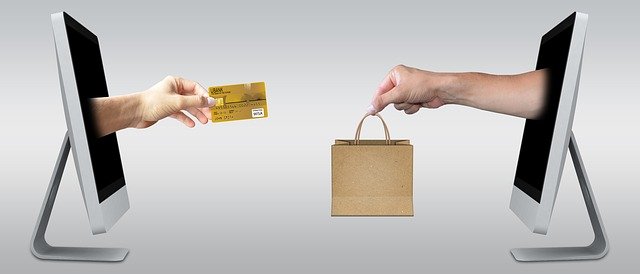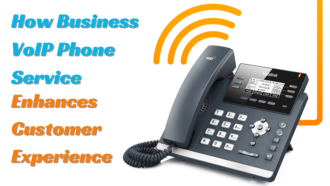How to Implement a Headless Commerce Approach for Your E-Commerce Business: A Step-by-Step Guide
Headless commerce is a flexible and customizable approach to e-commerce that enables businesses to separate their platform’s front-end and back-end components. This approach allows businesses to choose any front-end technology or framework that meets their specific needs and create a unique shopping experience for their customers.
Step-by-Step Guide to Implement a Headless Commerce Approach
This article will provide a step-by-step guide on how to approach implementing a headless commerce architecture for your e-commerce business.
Step 1: Assess Your Business Needs
Before implementing a headless commerce approach, assessing your business needs and determining if this approach fits your business is important.
Consider the following questions:
- Do you need greater flexibility and customization in your e-commerce platform?
- Do you want to provide your customers with a unique and seamless shopping experience?
- Are you willing to invest in the resources and expertise required to implement a headless commerce approach?
If the answer to these questions is yes, then a headless commerce approach may be the right fit for your business.
Step 2: Choose Your Front-End Technology
With headless commerce, businesses can choose any front-end technology or framework that meets their specific needs. Consider the following factors when choosing your front-end technology:
- User experience: Choose a technology that can provide your customers with a seamless and intuitive shopping experience.
- Performance: Choose a technology that can provide fast load times and high performance.
- Development expertise: Choose a technology your development team has experience with and can work efficiently in.
Some popular front-end technologies for headless commerce include React, Angular, Vue.js, and more.
Step 3: Choose Your Back-End Components
The back-end components of headless commerce include APIs, content management systems (CMS), and microservices. Consider the following factors when choosing your back-end components:
- Scalability: Choose components that can scale with your business as it grows.
- Integration: Choose components that can integrate with your front-end technology and other third-party tools.
- Customization: Choose components that can be customized to meet the specific needs of your e-commerce platform.
Some popular back-end components for headless commerce include Magento, Shopify, WooCommerce, and more.
Step 4: Develop Your APIs
APIs are a critical component of headless commerce as they enable the front-end and back-end components to communicate with each other. When developing your APIs, consider the following factors:
- Security: Ensure that your APIs are secure and can protect customer data.
- Performance: Ensure your APIs can handle high traffic and provide fast response times.
- Documentation: Ensure that your APIs are well-documented and easy to use.
Step 5: Develop Your Microservices
Microservices are modular components that are responsible for specific functions of your e-commerce platform, such as checkout or inventory management. When developing your microservices, consider the following factors:
- Scalability: Ensure your microservices can scale with your business as it grows.
- Reliability: Ensure that your microservices are reliable and can handle high traffic.
- Integration: Ensure your microservices can integrate with your APIs and other third-party tools.
Step 6: Implement and Test Your Solution
Once you’ve developed your front-end technology, back-end components, APIs, and microservices, it’s time to implement and test your solution. Consider the following factors when implementing and testing your solution:
- User experience: Ensure your solution provides customers a seamless and intuitive shopping experience.
- Functionality: Ensure your solution is fully functional and can handle all the necessary e-commerce functions.
- Performance: Ensure that your solution provides fast load times and high performance.
Step 7: Iterate and Improve
Headless commerce is a dynamic and evolving approach to e-commerce, which means that there is always room for improvement. After implementing and testing your solution, it’s important to continually iterate and improve it based on customer feedback, changing business needs, and new technologies.
Consider the following tips for iterating and improving your headless commerce solution:
- Collect customer feedback: Use tools like surveys, customer reviews, and analytics to collect customer feedback. Use this feedback to make informed decisions about how to improve your solution.
- Monitor performance: Use monitoring tools to track the performance of your solution and identify any areas that need improvement. This can include load times, page speed, and other key performance indicators.
- Stay up-to-date with new technologies: Keep up-to-date with new technologies and trends in e-commerce. This can help you identify new opportunities for improving your solution and staying ahead of the competition.
- Experiment with new features: Experiment with new features and functionality to see what resonates with your customers. This can help you identify new ways to improve the shopping experience and drive more sales.
By continually iterating and improving your headless commerce solution, you can ensure that your e-commerce platform remains competitive and provides a seamless shopping experience for your customers.
That’s a wrap
In conclusion, implementing a headless commerce approach for your e-commerce business can provide various benefits, including greater flexibility, customization, and scalability. By following the steps outlined in this guide, you can successfully implement a headless commerce solution that meets the specific needs of your business and provides a unique shopping experience for your customers. Remember to continually iterate and improve your solution based on customer feedback, changing business needs, and new technologies to stay ahead of the competition and drive more sales.


















